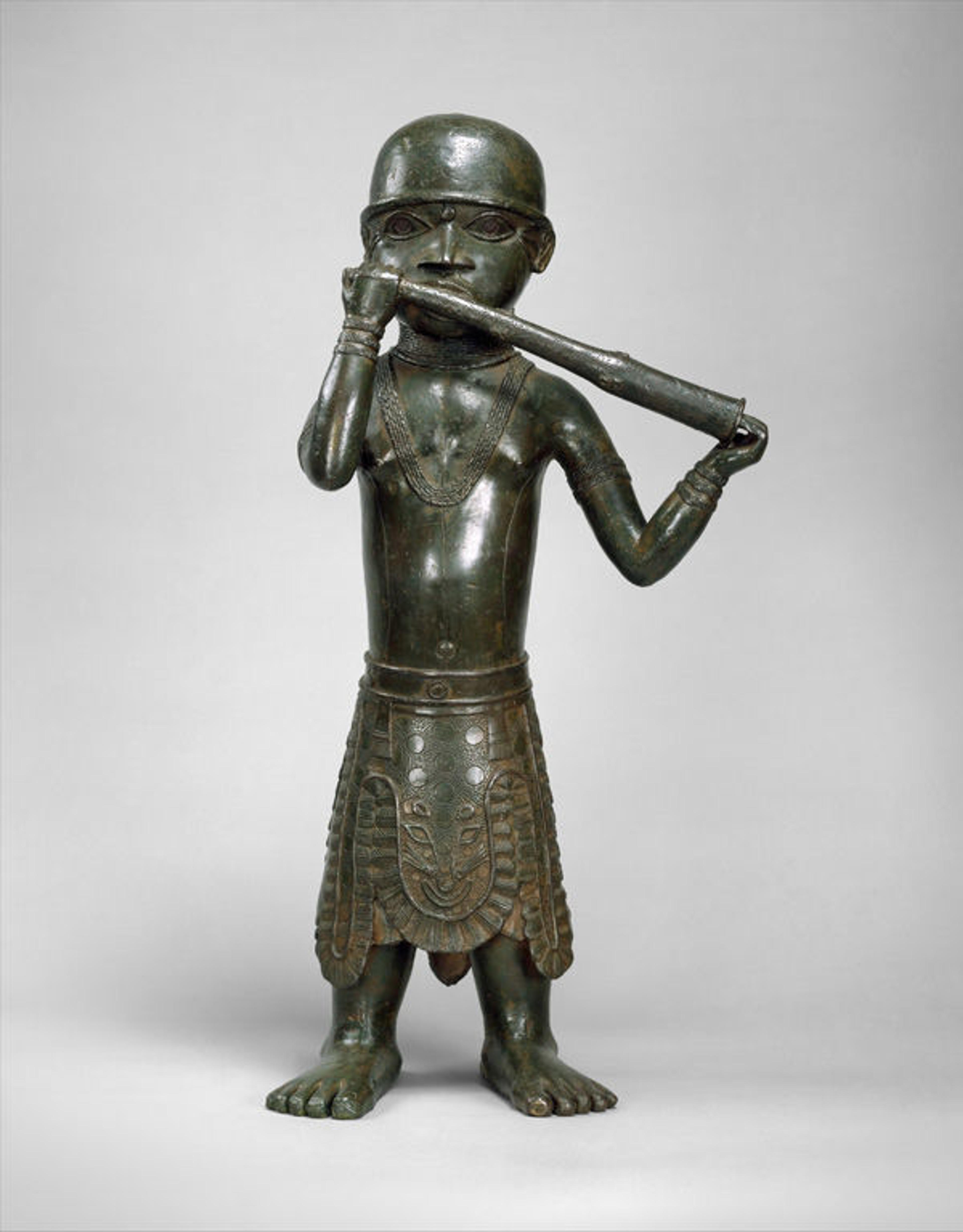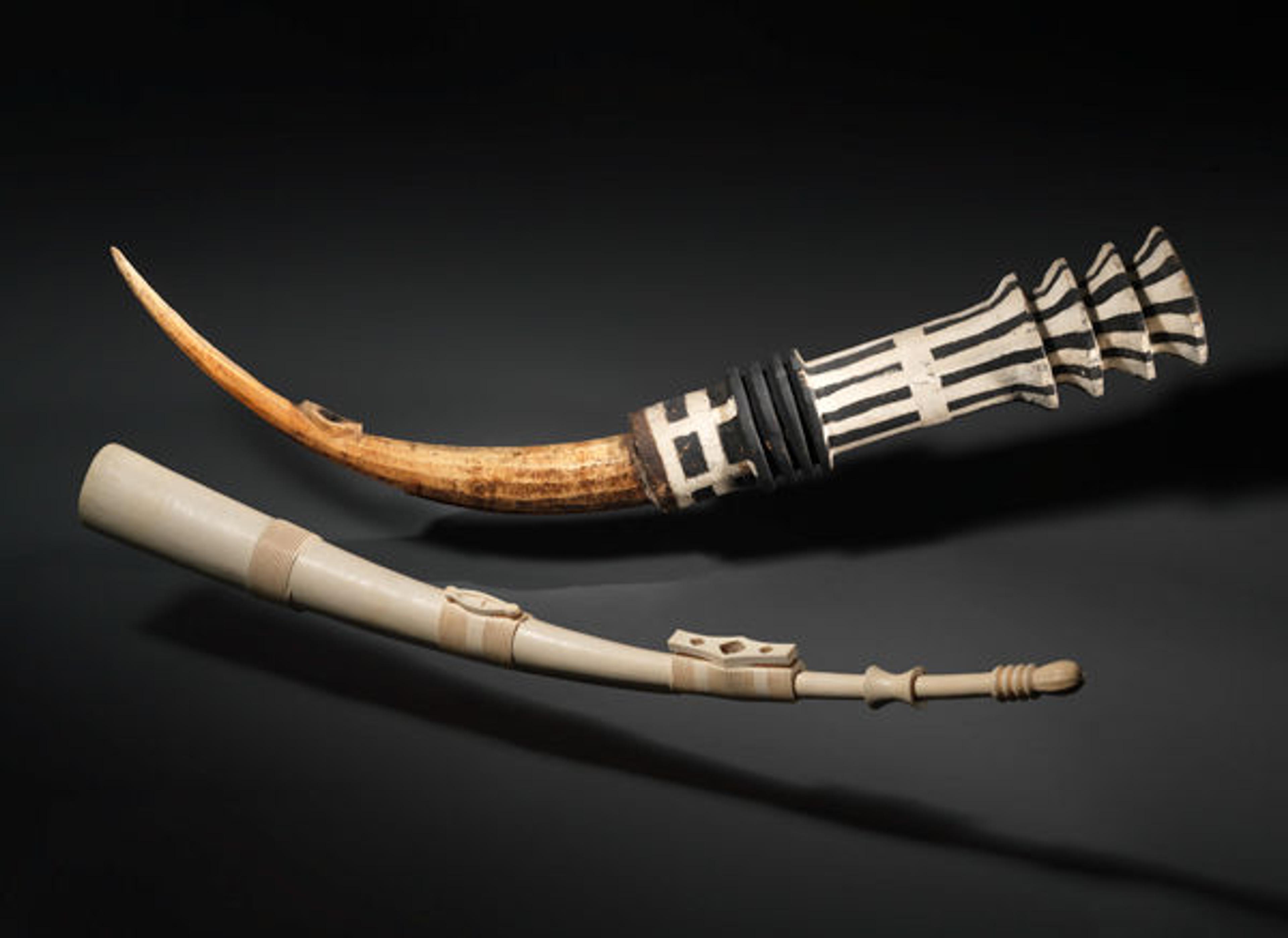The Status and Power of Ivory Trumpets

Figure: Horn Player, 1550–1680. Nigeria, Court of Benin. Edo peoples. Brass; H. 24 13/16 x W. 11 9/16 x D. 6 3/4 in. (63 x 29.4 x 17.2 cm). The Metropolitan Museum of Art, New York, The Michael C. Rockefeller Memorial Collection, Gift of Nelson A. Rockefeller, 1972 (1978.412.310)
«The new exhibition Kongo: Power and Majesty, on view through January 3, 2016, displays several musical instruments, including a variety of ivory side-blown trumpets. While many were used as trade items produced for wealthy Europeans, such instruments also served as integral symbols of royal status and power in several sub-Saharan regions. A number of similar trumpets are also on view in The André Mertens Galleries for Musical Instruments.»
Side-blown trumpets made of animal horn or tusk with mouthpieces drilled into the side are found throughout Africa; the above sculpture from the Edo peoples of Nigeria depicts how the side-blown trumpet was played. Ivory trumpets often symbolize kingly power, and those associated with royal ensembles are decorated with skins, wooden extensions, and beautiful carvings.

Top: Bondjo, ca. 1915. Democratic Republic of the Congo. Ekonda peoples. Ivory, wood, polychrome; L. 55 in. (139.5 cm). The Metropolitan Museum of Art, New York, Purchase, Rogers Fund, Roger L. Stevens Family Fund Gift, Gifts of Herbert J. Harris, and Brian and Ann Marie Todes, by exchange, Kay T. Krechmer Bequest, in memory of her husband, Harold H. Krechmer, and funds from various donors, 1992 (1992.326). Bottom: Side-Blown Trumpet, 19th century. Democratic Republic of the Congo. Mangbetu peoples. Ivory; L. 50 in. (127 cm). The Metropolitan Museum of Art, New York, Purchase, Bequest of Olive Huber, by exchange, and Brian and Ann Marie Todes Gift, 1999 (1999.74)
These examples above from the Democratic Republic of the Congo show two different types of side-blown trumpets. The one from the Mangbetu peoples (bottom) is made entirely of ivory, and skilled carvers decorated it in deep relief with an integral, projecting mouthpiece. Elegant trumpets like this are used in pairs or in larger ensembles to accompany dances or signal the king's entrance and departure.
The larger trumpet (top), from the Ekonda peoples, was originally intended to be used in battle; today it is used at occasions such as weddings, hunting or planting ceremonies, or the investiture of nkumu (leaders). A wooden extension to the ivory horn is painted with black-and-white stripes and checks. Its flanged shape, characteristic of early twentieth-century royal motifs, is similar to that of the headpieces worn by Ekonda leaders. The decorative motif also appears on drums and stamping sticks, a type of percussion instrument.
Related Links
Kongo: Power and Majesty, on view September 18, 2015–January 3, 2016
Of Note: "Fit for a King: An Ivory Clarinet by Charles Joseph Sax" (December 8, 2014)
Ken Moore
Ken Moore is a curator emeritus in the Department of Musical Instruments.